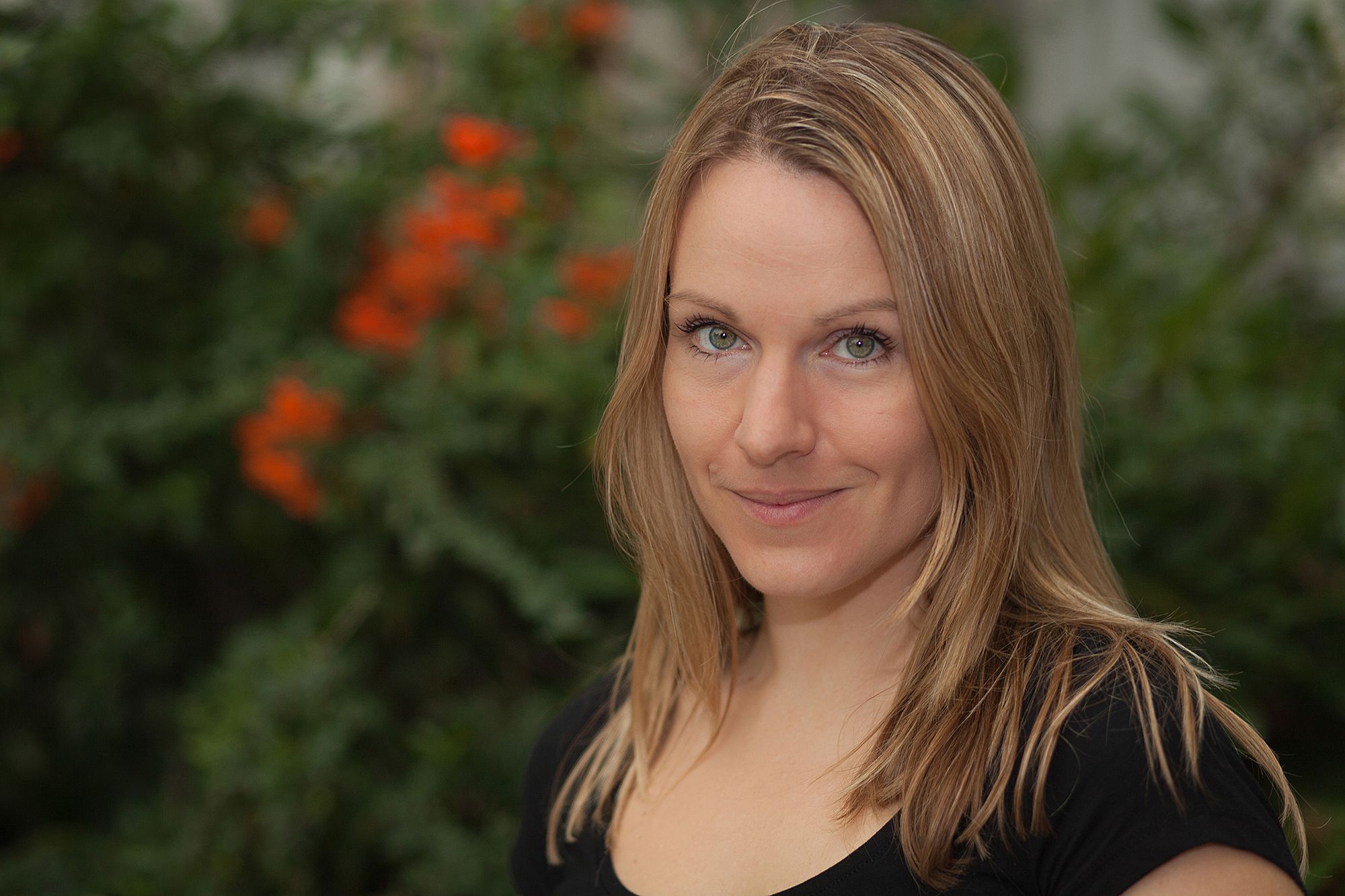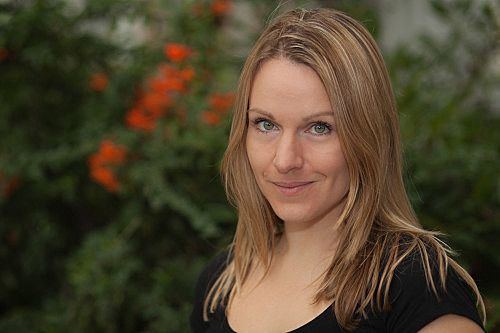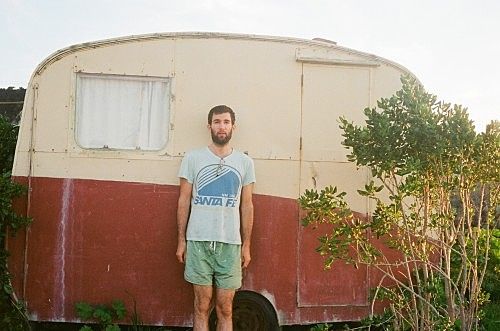Something to Reach Beyond: An Interview with Alice Miller
Stuart Wall talks to Alice Miller about her debut collection The Limits, a book of elegiac poems that inhabit and explore myth, and pose vital questions about art.
Alice Miller is a big fish in a small pond. She’s a bioluminescent fish in a giant pond – across the pond from America. That is, she’s the author of The Limits, published simultaneously by Auckland University Press and Shearsman, an independent press in England. She has an MA from the IIML and an MFA from the Iowa Writers' Workshop and is the recipient of the Royal Society of New Zealand Manhire Prize, the prize for the Landfall Essay Competition, a Creative New Zealand Louis Johnson Bursary and the BNZ Katherine Mansfield Premier Award for fiction. Lions and tigers and bears, oh my! Essays and stories and poems. In the words of Hera Lindsay Bird, ‘a kind of literary triathlete’.
I met Alice in 2006 in Iowa City. We had in common the amazing fortune of taking our first workshop with Brenda Hillman, a Californian poet who beams with mana, intellect and kindness. I was right impressed with the first poem Alice submitted, a terse, short-lined lyric on history, if memory serves me. Seven years on she’s still writing about history – and art and love – but having undergone huge growth as a poet and writer. These poems demonstrate a finer sensibility, a more nuanced understanding of the world; their footfalls echo longer and darker. The Limits is a book of elegiac poems that inhabit and explore myth, pose vital questions about art and call after a diffuse Muse in a sky we have set ‘on silent’ in torqued, late-surrealist lines. It's worth your time.
Body
It’s strange to want to give someone the earth
again. It’s strange to be the same planet
but split to forge a new, raw globe,
past plundered by lovers and strangers. Forgot
the way my own earth cracks, and tries to make
its half an other’s, forgot old stories re-made
to fable, to a minor bible for a plastic land.
We walk our planet and the print of our feet scrawls
onto our bodies. Each morning we walk to unearth
more mountains. Each day I sing the valleys
alive. Each night you find a dark pool,
and when you test it with your toe, a green
river ruptures. A quiet mirror opens.
You’ve written essays, short stories and poems with great success over the last several years since your time at the Iowa Writers’ Workshop from 2006-2008. Can you discuss how you came to writing in these various forms? Do you consider poetry your centre of gravity?
I do. I suspect I’ve tackled many forms because I’m curious and rather foolhardy. My sister Polly is a mad kayaker, often darting off to test some new river, whether it be in Nepal, or the Grand Canyon, or the Arctic Circle. Maybe I’m more like her than I realise. Trying new forms is addictive, because when you travel outside poetry, you learn more about drama and character and scene and plot and dialogue; whole worlds open up, and teach you more about where you began.
I’ve been reading into some of these poems a reflection of your experience of living in Vienna for the last year or two: ‘Tonight down skinny streets in a city, all the adults are doubled over the cobbles,/laughing or crying I’m not quite sure;/I’ve forgotten how to get close’. Can you describe for us your impression of living in an old European city?
What’s funny is those cobbles are in Iowa City! Remember those cobbled streets the cars used to struggle over? (Lee and I were in the same workshop at Iowa in 2006). Most of the poems in The Limits were finished before I moved to Europe. But living in Vienna now, I love that there are stories deep under the surface. You walk out of the Spanish Riding School (Spanische Hofreitschule) and right in front of you are these casual Roman ruins. Because New Zealand has an incredibly short human history, with Māori arriving in around the thirteenth century, here we are eye-deep in our mysteries. In Europe, sometimes you know you’re not even up to the ankle.
Did living in Vienna inform your thinking about the Western cultural tradition? Was it a kind of cultural palimpsest? Did your impressions and thoughts directly influence your treatment of myth in The Limits?
Because I wrote most of the poems in The Limits before living in Europe, they’ve been influenced by lots of places; living in New Zealand, travelling through Europe, living in America, and largely leafing through the pages of the dead.
‘Crowd’ seems to me a central statement about myth in The Limits. You write, ‘We crowd to haunt the same myths’, which is a lovely inversion: we haunt the myths rather than the other way around; we inhabit and maintain a finite set of myths through all the vicissitudes of human history because these myths somehow capture something fundamental about the human condition. Would you agree with this reading?
Absolutely. Who can say who is doing the haunting? When you walk around a museum gazing at the canvasses of St Jerome in the forest, as you look at him bent over, one hand pressed to his chest, is he haunting you, or are you haunting him?
Can you tell us a bit about the book’s title, The Limits?
Do limits suggest there’s something to reach beyond? Was Stevens right when he wrote death is the mother of beauty? A dear friend of mine is terrified of infinity. I’m frightened by the limits of time, which sounds like the opposite – but could it be the same thing?
Recon
when we go to the field
to recover our weapons
all our axe-handles
have grown back to trees
and although we are ready
to bury our dead,
there’s too much room in the ground
So, this is where we kneel again.
O Muse, let us.
In the poem ‘Recon’ we see a slant take on the familiar trope of ‘swords to ploughshares’ in which destructive weapons are converted to productive tools, at least as old as the Book of Isaiah: ‘they shall beat their swords into plowshares, and their spears into pruning hooks’. In this formulation both products are the result of human industry. But in ‘Recon’ we have axe-handles ‘grown back to trees’. In this I see on the one hand Aaron’s rod sprouting almond blossoms and on the other the self-destruction of mankind and nature’s blind reassertion of a natural order. Either way human industry is absent from one side of the equation. The poem ends, after telling us ‘there’s too much room in the ground’ for our dead, with the imperative, italicised ‘O Muse, let us’. Can you talk a bit about this weighty invocation and its place in The Limits?
These are wonderful observations, and I feel very flattered to have such an attentive and intelligent reader, but I fear I need an essay to reply adequately (or maybe a play!).
Crowd
We crowd to haunt the same myths, to show
another Christ, another eye-rolling Saint Sebastian,
to show gentle and sickly are the faces of saints
and St George attacking forever a dragon;
to show the Saint Sebastians shot and shot
with arrows that keep their eyes alive
as Penelope makes day by day the shroud
so she can unstitch the night
and we sailors leap off ship’s edge
to sink one siren’s song
and let the others lead us to the rocks.
In ‘Crowd’ ‘we sailors leap off ship’s edge/to sink one siren’s song//and let the others lead us to the rocks’. It calls to mind Kafka’s ‘Silence of the Sirens’ and Hass’s ‘mute women’ who ‘are changed forever/On their rocky waste of island by their imagination/Of his imagination of the song they didn’t sing’. Could you discuss these lines and their place in the tradition of the myth of the Sirens?
I do love those poems. In ‘Crowd’, the sirens aren’t mute. Their song is the trappings of the human condition. As writers, we try to capture parts of the human condition – to sink one siren’s song – but we are always destined for the rocks, for death.
The Limits contains two poems entitled ‘Waiata’. Why ‘waiata’ rather than ‘song’? How does this book mediate between Western culture and myth like the Trojan horse and the Garden of Eden and that of Māori here and elsewhere invoked?
To my mind, the Trojan horse and Maui, the Garden of Eden and the Inferno all come from the same pool, the same hole, the same Big Bang. Didn’t Maui go into the underworld, just like Jesus and Dante and Orpheus? Maybe it helps to say that The Limits is interested in a particular image I stole from Freud, that of a city which carries all its pasts at once. The model he uses is Rome, but say we’re talking about New Zealand, we’ve got the immaculate bush, we’ve got the first pa sites, the first marae, we’ve got the first mission houses all the way up to the most recent skyscraper, and everything is able to coexist in the same space.
But there’s another reason that these are waiata rather than songs. I worked for a number of years at the Waitangi Tribunal, where I was looking at the history between the Crown and Māori tribes. In this context, waiata are used as evidence, evidence of continued presence and use of the land. They are a way of marking space, marking time.
Album of breath
While the record plays? Should I say: Brahms-
loved-Clara, wrote each note for her, his
best friend’s wife, after Robert had thrown himself
into the Rhine, and recovered then raved
till death did-he-part? Do these snaps – one composer
gone mad, in a river; one beauty doing
as beauty always does; and one Brahms, a pianist
whose hands stretched
two octaves (I do not know how far
a madman’s hands might stretch) – and to refer
to Schumann as the madman –
Does this make these notes, we hear now, better,
or make us the epicentre
of a massive city
where nothing has ever happened?
‘Does this make these notes, we hear now, better’? This is the question you pose in the wonderful poem ‘Album of Breath’ in reference to the human tragedy at the heart of the masterpieces of Brahms, Schumann and, by extension into other poems, Picasso and Italian Renaissance painters. What are the advantages and disadvantages for you of knowing about the lives of artists and the geneses of their great works?
I fell in love with Brahms and Chopin without their biographies. Still, later I learned that after his death, Chopin had his heart cut out, preserved in alcohol, and returned to Poland. And Brahms famously yearned for his best friend’s wife, the musician Clara Schumann, and didn’t consummate the relationship even after Robert Schumann went mad. Some might say biography muddies the work, but what is life but muddiness?
I recently went to an exhibition on Wagner at the Jewish Museum in Vienna, aptly titled Euphoria and Unease. It showed clips from Parsifal andthe Ring cycle,evidence of Wagner’s anti-Semitism, an impassioned defence of Wagner from Stephen Fry, and even clips from Star Wars (Wagner’s penchant for leitmotif echoed in Darth Vader). The exhibition amassed its material with minimal commentary; it didn’t insist on an argument (an example which I try to echo here). Isn’t it interesting to think that Wagner, who was virulently anti-Semitic, would have had no idea of the complicated legacy he’d leave behind? It was six years after Wagner’s death that Hitler – who would later claim that he’d use Parsifal to make a religion – was born.
You’ve played piano from a young age. How does playing and studying classical music inform your work?
I don’t think it’s necessary to play an instrument, but all poets have a sense of music, and the great poets are virtuosos of language. It’s not just meter and rhythm; it’s diction and syntax, rhyme and half-rhyme. You could also say it’s manipulation of themes, in ways not dissimilar from the tools of musical composition: fragmentation, inversion, retrograde, augmentation, diminuition. It’s knowing the way the words rub against one another. Sound hits us before sense, and both should make a song.
Will you be back in New Zealand again soon?
I’ll be back from May till the end of November. Some days, I reckon we need to figure out how to drag these skinny islands closer to the continents.
The Limits was launched as part of the New Zealand Festival this month, and will be celebrated again on March 27 at the Michael King Centre in Auckland. The Shearsman version will be launched on April 15 at Swedenborg Hall in London.
Body first appeared in Narrative Magazine
Recon first appeared in Poetry Salzburg Review
Album of Breath first appeared in Shearsman magazine and Landfall


